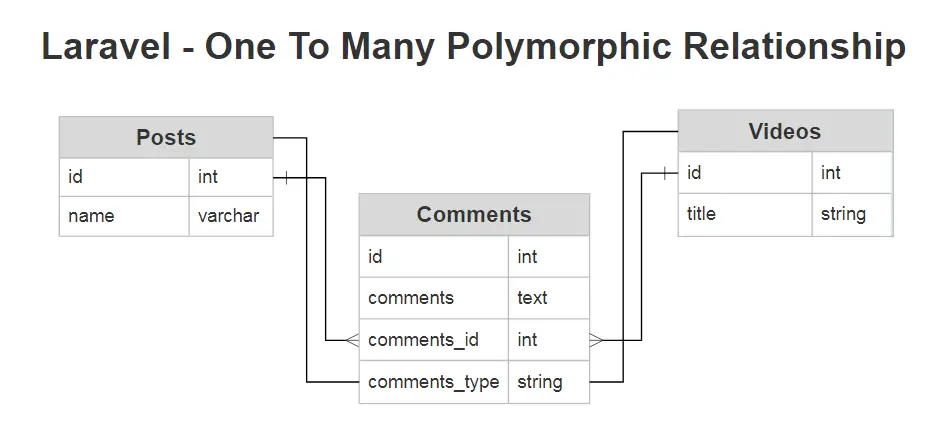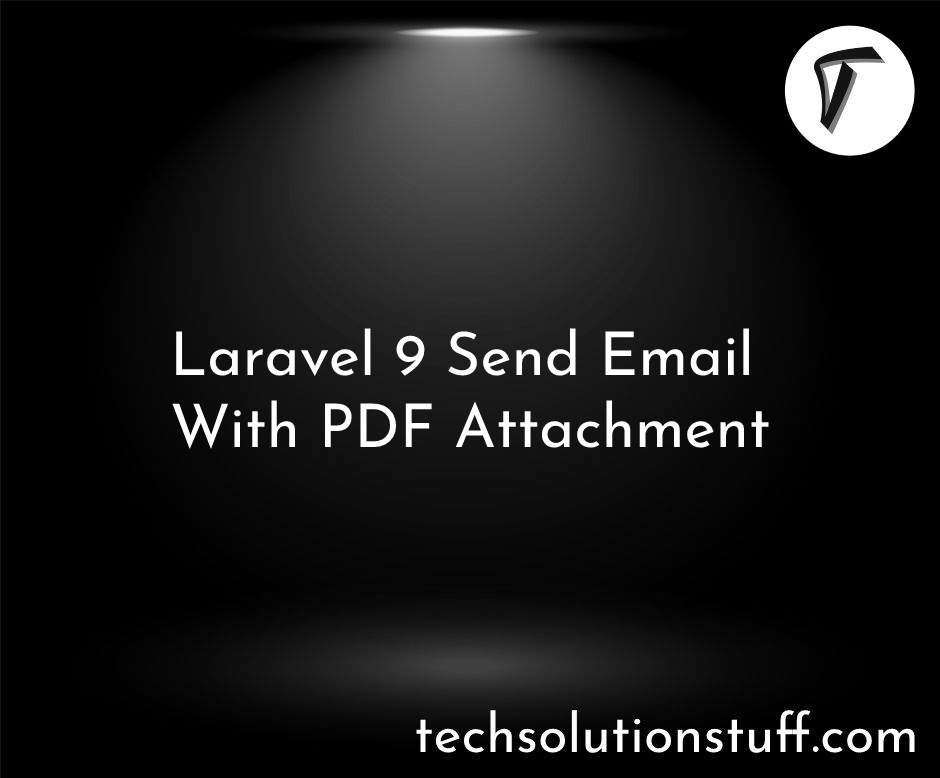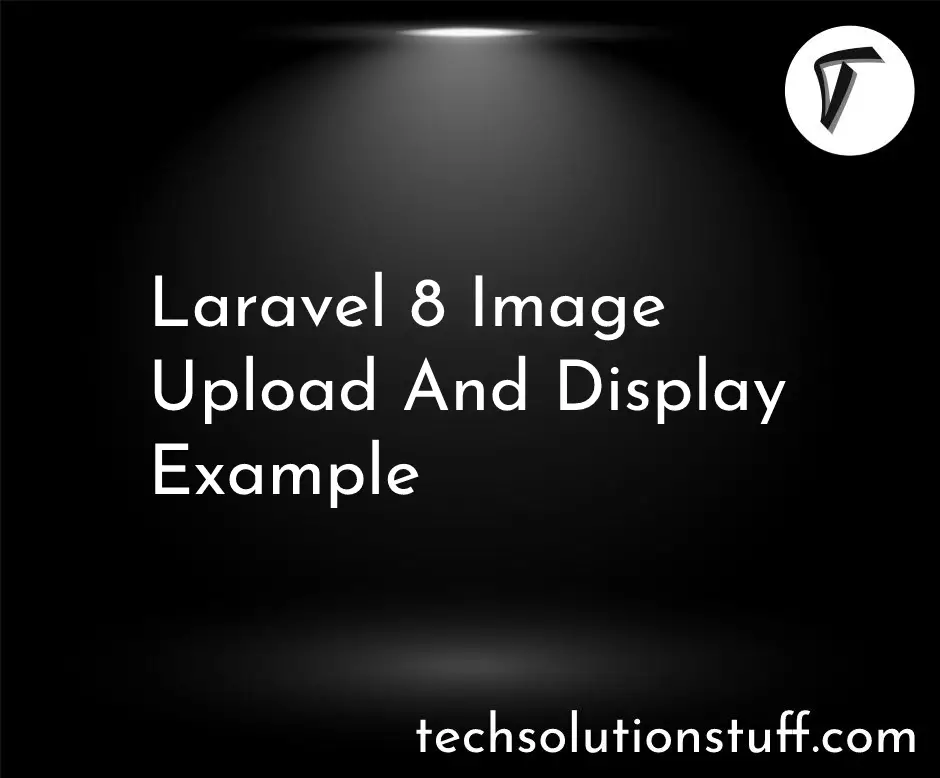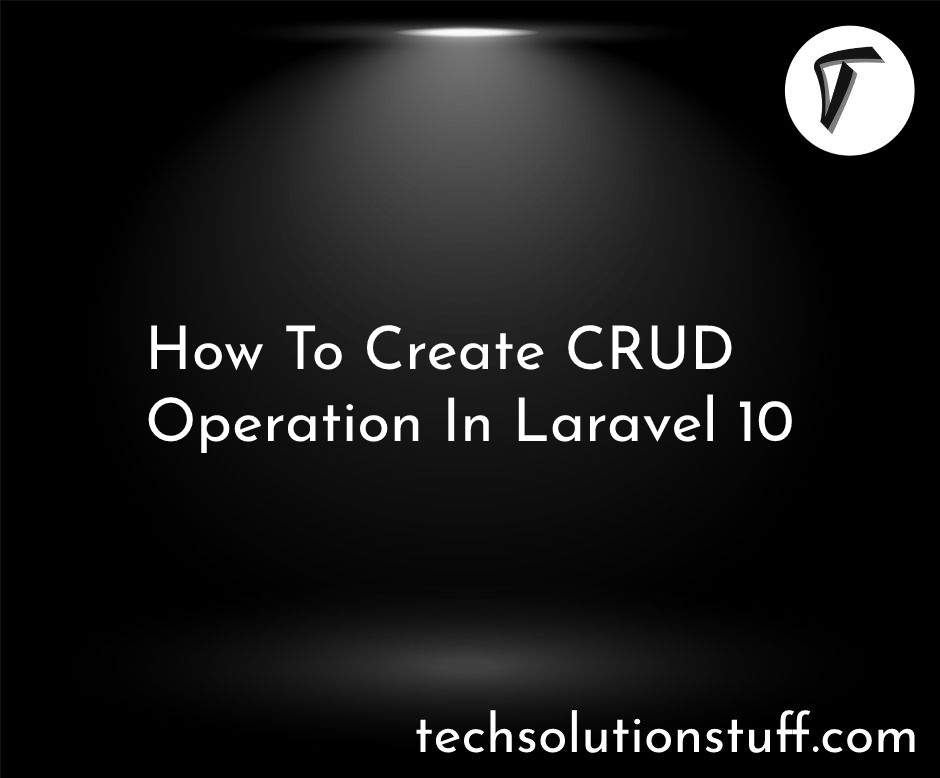One To Many Polymorphic Relationship Laravel 9
In this article, we will see one to many polymorphic relationship in laravel 9. A one-to-many polymorphic relation is similar to a typical one-to-many relation. The child model can belong to more than one type of model using a single association. One to many polymorphic relationship is used when a model belongs to more than one other model on a single association model.
For example, users of your application can comment on posts and videos. Using polymorphic relationships, you may use a single comments table to contain comments for both posts and videos. using morphMany() and morphTo() you can access data.
So, let's see laravel 9 one to many polymorphic example, polymorphic relationship in laravel 9, morphMany in laravel 9, morphTo in laravel 9, laravel 9 relationship example.
In this example, we will create posts, comments, and videos tables. All tables are connected with each other like the below screenshot and we are creating migration and model for all tables and retrieving data using one to many polymorphic relationships in laravel 6, laravel 7, and laravel 8.

Now, we will create a migration for posts, comments, and videos tables. and add a foreign key to the posts and videos table.
Post Table
Schema::create('posts', function (Blueprint $table) {
$table->increments('id');
$table->string("name");
$table->timestamps();
});
Comment Table
Schema::create('comments', function (Blueprint $table) {
$table->increments('id');
$table->text("comments");
$table->integer('commentable_id');
$table->string("commentable_type");
$table->timestamps();
});
Video Table
Schema::create('videos', function (Blueprint $table) {
$table->increments('id');
$table->string("title");
$table->timestamps();
});
Now, we will create Post, Comment, and Video model.
Post Model
class Post extends Model
{
/**
* Get all of the post's comments.
*/
public function comments()
{
return $this->morphMany(Comment::class, 'commentable');
}
}
Comment Model
class Comment extends Model
{
/**
* Get the parent commentable model (post or video).
*/
public function commentable()
{
return $this->morphTo();
}
}
Video Model
class Video extends Model
{
/**
* Get all of the video's comments.
*/
public function comments()
{
return $this->morphMany(Comment::class, 'commentable');
}
}
Once your database table and models are defined, you may access the relationships via your model's dynamic relationship properties. For example, to access all of the comments for a post, we can use the comments property.
$post = Post::find(1);
foreach ($post->comments as $comment) {
//
}
You may also retrieve the parent of a polymorphic child model by accessing the name of the method like the below code.
$comment = Comment::find(1);
$commentable = $comment->commentable;
Now, we will give you an example of creating the record for one to many polymorphic relationships like the below code.
$post = Post::find(1);
$comment = new Comment;
$comment->comments = "this is test comments";
$post->comments()->save($comment);
You might also like:
- Read Also: How To Import CSV File In MySQL Using Node.js
- Read Also: Many To Many Relationship Laravel 9 Example
- Read Also: One To Many Relationship Laravel 9 Example
- Read Also: Laravel 9 CRUD Operation Step By Step








